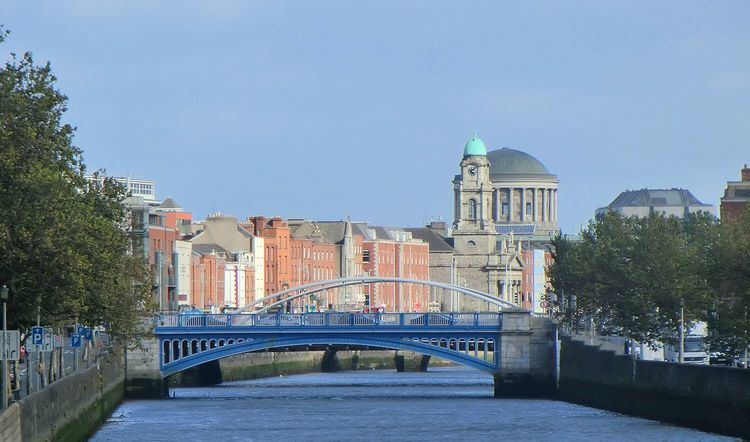Opened 1863 | Width 10m Total length 29 m | |
 | ||
Preceded by First 1670: Bloody BridgeRebuilt 1675: Barrack BridgeRebuilt 1859: Victoria & Albert BridgeRenamed 1930s: Rory O'More Bridge Address Sráid Watling, Arran Quay, Baile Átha Cliath, Ireland Hours Open today · Open 24 hoursWednesdayOpen 24 hoursThursdayOpen 24 hoursFridayOpen 24 hoursSaturdayOpen 24 hoursSundayOpen 24 hoursMondayOpen 24 hoursTuesdayOpen 24 hoursSuggest an edit Similar Mellows Bridge, Father Mathew Bridge, Frank Sherwin Bridge, O'Donovan Rossa Bridge, James Joyce Bridge | ||
Rory O'More Bridge (Irish: Droichead Ruaraí Uí Mhóra) is a road bridge spanning the River Liffey in Dublin, Ireland and joining Watling Street (by the Guinness grounds) to Ellis Street and the north quays.
The original wooden bridge on this site, built in 1670, was officially named Barrack Bridge. However, it became known locally as Bloody Bridge, following several deaths resulting from violence after the arrest of ferrymen who attempted to destroy the bridge (in an ill-fated attempt to protect their livelihoods).
The timber bridge was replaced by a stone bridge in 1704, which was replaced in turn by the present day structure.
Designed by George Halpin, the bridge was fabricated at the foundry of Robert Daglish in St Helens, Lancashire, from cast iron (with a wrought iron deck) and is supported on granite abutments. The bridge was completed in 1859 and opened as the Victoria & Albert Bridge (or the Queen Victoria Bridge).
The bridge was renamed in the 1930s for Rory O'More, one of the key figures from the plot to capture Dublin as part of the Irish Rebellion of 1641.
